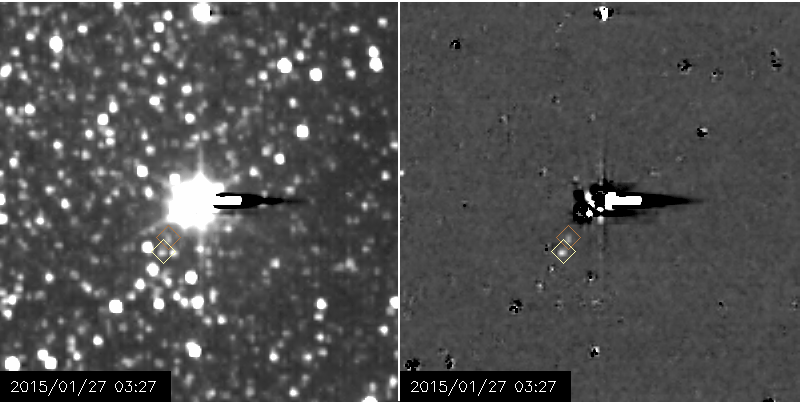Nix (orange diamond) and Hydra (yellow diamond) orbit Pluto. Image via NASA/Johns Hopkins APL/Southwest Research Institute
US space agency NASA’s New Horizons probe has captured images of Pluto’s two moons, Nix and Hydra, for the first time exactly 85 years after the dwarf planet was first discovered.
As part of its continuing mission to analyse what was once the ninth planet in our solar system, New Horizons recently returned its first grainy images of the dwarf planet after spending the last nine years travelling to reach it.
And now, these latest images were obtained at a distance of 186m-200m km from Pluto and show its two orbiting moons in some of its clearest detail yet. The images were captured on the exact same day 85 years after Clyde Tombaugh first discovered Pluto on 18 February 1930.
The images have been assembled into a seven-frame gif showing the two celestial bodies orbiting Pluto, with the help of New Horizons’ Long-Range Reconnaissance Imager (LORRI) that uses a special mode that combines pixels to increase sensitivity at the expense of resolution.

A gif of Hydra (yellow diamond) and Nix (orange diamond) orbiting Pluto. Image via NASA/Johns Hopkins APL/Southwest Research Institute
The discovery of Nix and Hydra was an altogether more recent discovery, having been photographed for the first time in 2005 by the Hubble Space Telescope, leading to the discovery that the latter is Pluto’s outer-most moon orbiting the planet once every 38 days.
Meanwhile, Nix, at a distance of 48,700km from Pluto, orbits it every 25 days.
Both Nix and Hydra are relatively small on the scale of space, with a diameter of between 40km-150km each.
“It’s thrilling to watch the details of the Pluto system emerge as we close the distance to the spacecraft’s July 14 encounter,” said New Horizons science team member John Spencer. “This first good view of Nix and Hydra marks another major milestone, and a perfect way to celebrate the anniversary of Pluto’s discovery.”